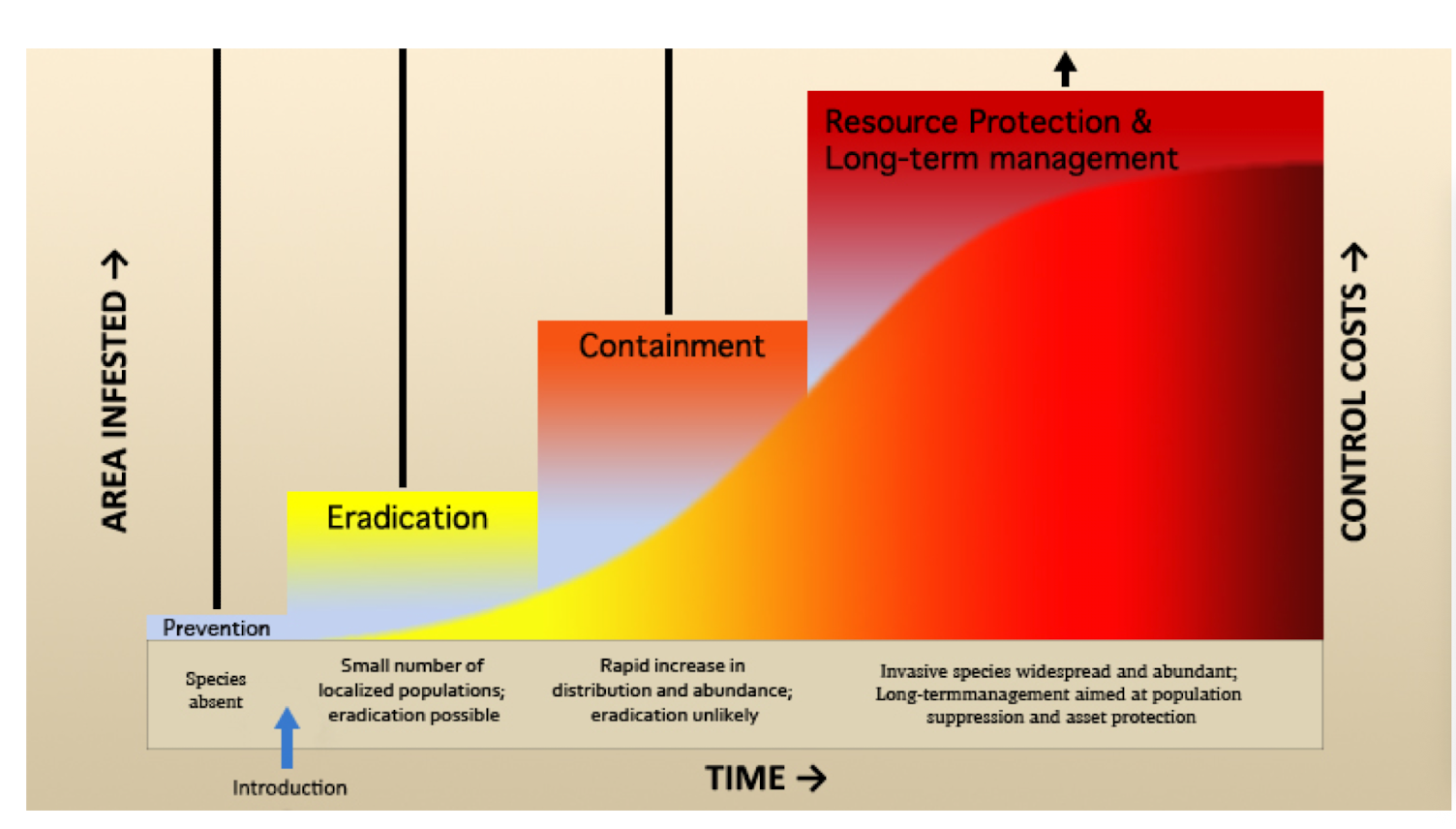Conservation Biology - Unit 10 Invasive Species & Disease
1/39
Earn XP
Description and Tags
Flashcards on Invasive Species and Diseases based on lecture notes.
Name | Mastery | Learn | Test | Matching | Spaced |
|---|
No study sessions yet.
40 Terms
Habitat Destruction
1 threat to imperiled species, affecting 85% of them.
Alien Species
2 threat to imperiled species, affecting 49%.
Overexploitation
A significant threat particularly for reptiles, mammals, and birds.
Pollution
#2 threat for aquatic species, especially fishes & mussels.
Disease
Affects birds more than other groups of species.
Stephen’s Island Wren
A bird endemic to Stephen’s Island in New Zealand, allegedly wiped out by a single cat.
Exotic species
Species established outside of their native ranges due to human activities; synonymous with introduced, nonnative, nonindigenous, and alien species.
Naturalized species
Alien species, introduced by humans, that are now reproducing naturally without causing any harm
Invasive species
Exotic species that are increasing in number and distribution at the expense of native species or ecosystems.
Dispersal
A natural process where species have continually shifting ranges.
Cattle Egret
An example of a species that dispersed naturally and greatly expanded its range.
Native Invasive species
Includes native species increasing in number and distribution at the expense of other native species and ecosystems.
Tens Rule
1 in 10 transported species escapes, 1 in 10 escaped species becomes established, and 1 in 10 established species becomes invasive.
Invasion curve
Illustrates the stages of invasive species management, from pre-arrival to long-term control.

Characteristics of successful invasive species
High reproductive rates, generalist habits, good dispersal abilities, pioneer species adaptations, absence of native predators or pathogens.
Vulnerable Ecosystem Characteristics
Includes low diversity of native species, absence of native predators and pathogens, human-disturbed habitats, and disrupted fire regimes.
Island Vulnerability
Islands are particularly vulnerable to invasive species due to open niches and island species potentially being poorer competitors
Sources of Spread
Includes agriculture, accidental spread, biological control agents, deliberate introductions, and escape of captive species.
Norway Rat
Spread to all continents except Antarctica, a good commensal but very destructive.
European Rabbits
Brought for hunting in Australia, they exploded in population due to absence of native predators and pathogens.
Zebra Mussels
Accidentally came to North America in ballast water of ships.
Rainbow Trout
Widely introduced as sport fish, but compete with native trout and hybridize with other trout species.
Fire Ants
Introduced to North America from South America, they outcompete native insects.
Formosan Termites
Introduced to New Orleans from Asia, it causes great economic damage.
Hemlock Woolly Adelgid
Introduced from Japan, infests and kills Eastern Hemlocks.
Emerald Ash Borer
Introduced to the Detroit area, kills native ash trees.
Brown Marmorated Stink Bugs
Introduced from Asia, major pests on fruits & vegetables.
Spotted Lanternfly
Native to Asia, appeared in Berks Co., PA, and has spread.
Multicolored Asian Lady Beetle
Introduced by the U.S.D.A. as a biological control agent.
Zebra Mussels
Introduced to the Great Lakes from ballast water, causing significant management costs.
Asian Jumping Worm
Invasive earthworm in the northeastern U.S. having profound effects on ecosystems
Hammerhead Worm (Bipalium)
Introduced platyhelminth from Asia, aggressive predator on earthworms.
Cane Toads
Native to Central & South America, introduced widely and are invasive in some areas, including Australia.
Burmese Pythons
Released pets in southern Florida, major predators on mammals in the Everglades.
Pigeons
Introduced from Europe, good human commensals causing agricultural damage and spreading disease.
European Starling
Introduced because a man wanted to introduce all the birds Shakespeare wrote about in his plays to America, it causes crop damage, spreads disease, and outcompetes native species.
Feral Pigs
Descendants of escaped livestock, destroying native species and habitats.
Japanese Barberry
Displaces native plants and reduces wildlife habitat.
Japanese Knotweed
Introduced as an ornamental plant, forms dense growths in riparian areas.
Mile-a-minute Weed
Herbaceous vine from Asia, stem covered with sharp barbs that spreads rapidly.